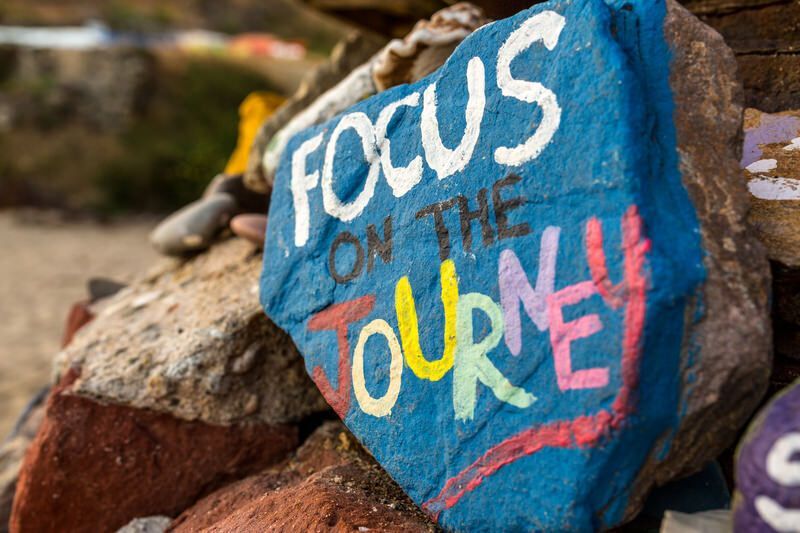© Barry Lo | Dreamstime.com - Focus on the journey
by Chris Kukk
“I walk slowly, but I never walk backward.” I’m pretty sure that President Abraham Lincoln didn’t think that his words describing his position on the abolition of slavery would be applicable to ideas about making education more effective in today’s world; but like many of President Lincoln’s words, they do apply. Two seemingly opposite activities (one focused on movement and the other on slowness) can help create optimal learning environments that decrease disruptive behavior and increase academic performance: playtime and meditation.
Increasing time for movement and play in school, according to Debbie Rhea, will improve “attentional focus, behavioral issues, and academic performance.” Rhea physiologically explains how being active during the day “stimulates the neurons that fire in the brain.” In contrast, she argues that when human beings sit for more than 20 minutes, the brain “falls asleep” because it is deprived of the neuronal fuel of glucose and oxygen. The Finns—always at the top or near the top of international test scores—adopted and adapted the “movement idea” so that students are given a 15-minute break every 45 minutes during the school day. W.R. Klemm supports the idea, in a chapter in Mental Biology called “How Brains Work,” that “Play is crucial for normal development of both higher animals and humans.” He cites studies from the 1970s through 2010s to make the case for the importance of play and ends the chapter citing a 2013 study from Sciencemagazine showing “a correlation with physical activity…and how many new neurons appeared.” Rhea’s pilot program (Innovating Strategies, Inspiring Students—Project ISIS), which promotes recess time and physical education in schools (two areas where time has decreased in schools), is not only supported by cutting edge neuroscience but should be combined with social-emotional learning (SEL).
Social-emotional learning “is based on the idea that emotional skills are crucial to academic performance” and its goal is “to instill a deep psychological intelligence that will help children regulate their emotions.” From the Hawn Foundation’s MindUp curriculum (for which I am on the Advisory Board) to programs such as Second Step and Ruler, SEL options for schools have multiplied over the last few years. Meditation plays a role in many SEL programs. Meditation has been used by Silicon Valley and Fortune 500 businesses to help their employees focus and achieve more at work; even the Pentagon has joined the business ranks by awarding two $1 million grants on meditation to improve the focus of soldiers this past year. If the top businesses in the world are using meditation to enhance better performance and focus and succeeding at it, why shouldn’t our schools? Besides, meditation is a less intrusive and more constructive way to address “The ADHD Explosion” occurring in the United States than medicating our children. One of the paradoxes of education is that slowing down helps students to speed up academic achievement; slowing down a classroom creates a low stress environment, which neuroscience has shown increases learning potential. Moving forward with increasing playtime while slowing down with daily meditation will create schools that have more effective learning environments.
This article was originally posted by Chris Kukk.

